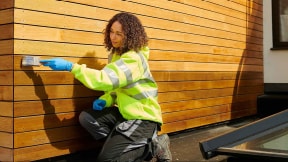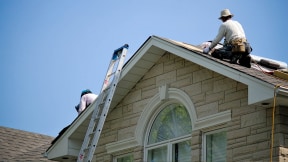How to prepare your home for climate change

Whether you’re preparing to buy a home or already own one, climate change is inspiring new conversations... and new prices on both insurance policies and coverage. While homeowners are typically required to carry homeowners insurance, standard policies may not protect against all damage from natural disasters, which is especially significant as climate change exacerbates these issues.
Climate realities for homeowners
Winter storms, floods, tornadoes, hurricanes, wildfires and earthquakes are all some of the most common climate hurdles for homeowners. Earthquakes and wildfires are common out west; winter storms in the east; heat or hurricanes in the south. Floods are common near bodies of water.
Despite the difference between a flood and a fire, or an earthquake and a snowstorm, their impact proves substantial. It has been reported that climate change results in:
- Higher electric bills due to temperature changes
- Home value depreciation due to rising sea levels and increased flood risk
- Droughts and restricted water use
- Climate migration, or mass displacements of homeowners, from fires or floods
- Skyrocketing insurance policies
Naturally, everything described can provoke anxiety for homeowners. But discovering your home’s climate risk factor and what insurance policies help protect your assets is your best weapon.
Assessing your homes climate change risk factors
The implications of natural disasters can inform which type of insurance homeowners need and how much they’ll pay. We’ve established that climate change is a potential concern for homeowners’ dependence on location, but how do homeowners know which concerns are most relevant to them? After all, home listings don’t usually include climate warnings. Luckily there are resources to help aid in your investigation.
You can start a climate risk assessment by checking the Federal Emergency Management Agency (FEMA) website for resources like their Flood Map Service Center. If your property is in a federal flood zone, your lender will require you to purchase flood insurance.
To learn more about climate risk and homeownership, you can visit your local county’s office and ask for natural disaster and housing records. In April 2022,the Consumer Financial Protection Bureau released additional information and resources surrounding climate risk for both homeowners and renters.
Insurance policies for climate change
Once you’ve assessed the risk for a given property, you’ll likely want to consider ways to mitigate it. One way is with an appropriate insurance policy.
Homeowners insurance
Homeowners insurance is the general term for an insurance policy to protect your home and many mortgage lenders will require some form of homeowners insurance. There are many variations of homeowners insurance, some providing more coverage than others, and a typical homeowners insurance policy may cover things like:
- Additional living expenses
- Personal liability
- Medical payment coverage
- Property damage
Property insurance
Property insurance is another supplemental policy to homeowners insurance. It can help cover both your home and other belongings. If the damage of a natural disaster goes beyond your home’s structure, for example your car, you may qualify for reimbursement under a property insurance policy.
Flood insurance
According to FEMA, just one inch of floodwater can cause up to $25,000 in damage. Most homeowners’ insurance does not cover flood damage. Flood insurance is a separate policy that can cover buildings, the contents in a building, or both.
Earthquake insurance
Individuals who live in California and the Pacific Northwest are susceptible to earthquake damage. Earthquake insurance is a policy often offered with homeowners insurance in certain states. Note that some earthquake insurance policies require the policyholder to meet certain criteria, mostly related to risk. According to the California Department of Insurance, basic earthquake insurance covers at least part of:
- Dwelling coverage: your home up to a certain amount.
- Personal property: items in your home, like furniture, electronics and other valuables.
- Additional living expenses or loss of use: covers temporary extra costs to live somewhere else while your neighborhood evacuates, or your home is repaired.
In summary
How to prepare for climate change is a question people are asking more and more. Fortunately, there may be some ways to do so with the help of certain insurance coverages. With a little investigation, you may be able to identify which insurance can help reduce your own climate change risk.



